MaryAnn Bernal's Blog, page 266
June 23, 2014
History Trivia - The Battle of Bannockburn secures the throne of Scotland for Robert the Bruce
June 23
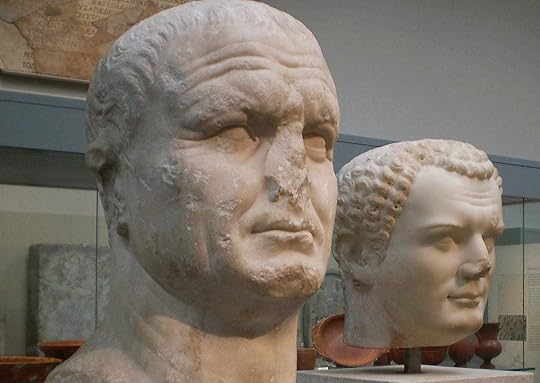
79 Titus succeeded his father Vespasian as the tenth Roman Emperor.

930 The world's oldest parliament, the Iceland Parliament, was established.
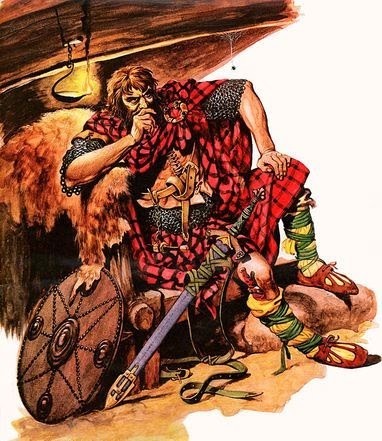
1314 The Battle of Bannockburn. This significant battle helped the Scots regain independence from England and secured the throne of Scotland for Robert the Bruce.
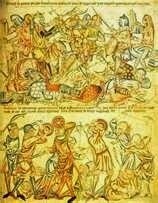
1532 Henry VIII and François I signed a secret treaty against Emperor Charles V.


79 Titus succeeded his father Vespasian as the tenth Roman Emperor.

930 The world's oldest parliament, the Iceland Parliament, was established.

1314 The Battle of Bannockburn. This significant battle helped the Scots regain independence from England and secured the throne of Scotland for Robert the Bruce.

1532 Henry VIII and François I signed a secret treaty against Emperor Charles V.

Published on June 23, 2014 04:34
June 22, 2014
History Trivia - Battle of Pydna: Romans defeat Macedonian King Perseus ending the Third Macedonian War
June 22
168 BC Battle of Pydna: Romans under Lucius Aemilius Paullus defeated and captured Macedonian King Perseus ending the Third Macedonian War.

1377 Richard II succeeded Edward III as king of England.
 Galileo Villa
Galileo Villa
1633 The Holy Office in Rome forced Galileo Galilei to recant his view that the Sun, not the Earth, is the center of the Universe. (on Oct 31, 1992, Vatican admitted it was wrong)
168 BC Battle of Pydna: Romans under Lucius Aemilius Paullus defeated and captured Macedonian King Perseus ending the Third Macedonian War.

1377 Richard II succeeded Edward III as king of England.
 Galileo Villa
Galileo Villa1633 The Holy Office in Rome forced Galileo Galilei to recant his view that the Sun, not the Earth, is the center of the Universe. (on Oct 31, 1992, Vatican admitted it was wrong)
Published on June 22, 2014 05:04
June 21, 2014
Newfound Dinosaur Sported 'Wings' on its Head
By Elizabeth Palermo
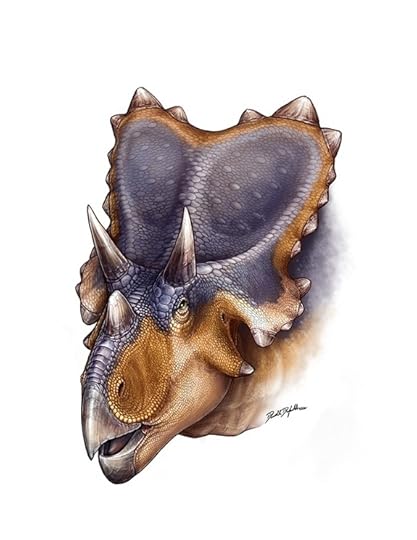 This artist reconstruction reveals the horned dinosaur Mercuriceratops Gemini, a new species of horned dinosaur that sported winglike ornamentation on the sides of its skull.
This artist reconstruction reveals the horned dinosaur Mercuriceratops Gemini, a new species of horned dinosaur that sported winglike ornamentation on the sides of its skull.
Credit: Courtesy Danielle Dufault Move over Triceratops: There's a new horned dinosaur in town, and its cranial ornamentation is even more impressive than the three-horned dinosaur the world has come to know and love.A study of the recently discovered species, Mercuriceratops gemini, provides more details on this flashy dinosaur, which possessed not only the standard trifecta of facial horns, but also a giant, winglike frill protruding from the back of its skull."The butterfly-shaped frill, or neck shield, of Mercuriceratops is unlike anything we have seen before," said David Evans, co-author of the new study and curator of vertebrate paleontology at the Royal Ontario Museum in Canada, in a statement. "Mercuriceratops shows that evolution gave rise to much greater variation in horned dinosaur headgear than we had previously suspected." The research describing the new species is based on fossil evidence collected from Montana as well as Alberta, Canada. Mercuriceratops gemini lived about 77 million years ago, during the Late Cretaceous Period, and was approximately 20 feet (6 meters) long and weighed more than 2 tons. Like Triceratops and other ceratopsid dinosaurs, Mercuriceratops was a plant-eating dinosaur, and researchers believe it had a parrotlike beak, as well as two long brow horns above its eyes.Its headgear, though, is in a league all its own.
"Mercuriceratops took a unique evolutionary path that shaped the large frill on the back of its skull into protruding wings like the decorative fins on classic 1950s cars," said Michael Ryan, lead author of the study and curator of vertebrate paleontology at The Cleveland Museum of Natural History in Ohio, in the statement. "It definitively would have stood out from the herd during the Late Cretaceous."
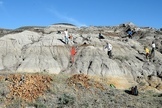
[image error] Fossils of the horned dinosaur Mercuriceratops Gemini were discovered in Montana as well as in a quarry in Dinosaur Provincial Park, Alberta, Canada (shown here).
Fossils of the horned dinosaur Mercuriceratops Gemini were discovered in Montana as well as in a quarry in Dinosaur Provincial Park, Alberta, Canada (shown here).
Credit: Courtesy Philip J. Currie
View full size imageThe dinosaur's name, Mercuriceratops, is a combination of "Mercury" — the Roman God best known for his winged helmet — and "ceratops," a Greek word meaning "horned face." The second part of its name "gemini," is Latin for "twins" and refers to the fact that paleontologists uncovered two nearly identical specimens of the species, the first in north-central Montana and the second at the UNESCO World Heritage Site, Dinosaur Provincial Park, in Alberta, Canada.
The study detailing the two findings, published online in the journal Naturwissenschaften, focuses on skull fragments of Mercuriceratops found at each site. Originally, scientists believed the specimen they had uncovered at the Judith River Formation of Montana was simply a distorted fossil from the remains of a more common ceratopsid species. But the discovery of a nearly identical specimen collected from the Dinosaur Park Formation in Alberta suggested otherwise.
"The Alberta specimen confirmed that the fossil from Montana was not a pathological specimen, nor had it somehow been distorted during the process of fossilization," said Philip Currie, professor and Canada research chair in dinosaur paleobiology at the University of Alberta, in the statement. "The two fossils — squamosal bones from the side of the frill — have all the features you would expect, just presented in a unique shape." (The squamosal bone is located in the skull of vertebrates.)
As to the question of why Mercuriceratopsdeveloped such a prominent skull ornament, the researchers presented a number of possibilities.
"Horned dinosaurs in North America used their elaborate skull ornamentation to identify each other and to attract mates — not just for protection from predators," Ryan said. "The winglike protrusions on the sides of its frill may have offered male Mercuriceratops a competitive advantage in attracting mates.”
http://www.livescience.com/46427-new-dinosaur-sported-winged-headgear.html

 This artist reconstruction reveals the horned dinosaur Mercuriceratops Gemini, a new species of horned dinosaur that sported winglike ornamentation on the sides of its skull.
This artist reconstruction reveals the horned dinosaur Mercuriceratops Gemini, a new species of horned dinosaur that sported winglike ornamentation on the sides of its skull.Credit: Courtesy Danielle Dufault Move over Triceratops: There's a new horned dinosaur in town, and its cranial ornamentation is even more impressive than the three-horned dinosaur the world has come to know and love.A study of the recently discovered species, Mercuriceratops gemini, provides more details on this flashy dinosaur, which possessed not only the standard trifecta of facial horns, but also a giant, winglike frill protruding from the back of its skull."The butterfly-shaped frill, or neck shield, of Mercuriceratops is unlike anything we have seen before," said David Evans, co-author of the new study and curator of vertebrate paleontology at the Royal Ontario Museum in Canada, in a statement. "Mercuriceratops shows that evolution gave rise to much greater variation in horned dinosaur headgear than we had previously suspected." The research describing the new species is based on fossil evidence collected from Montana as well as Alberta, Canada. Mercuriceratops gemini lived about 77 million years ago, during the Late Cretaceous Period, and was approximately 20 feet (6 meters) long and weighed more than 2 tons. Like Triceratops and other ceratopsid dinosaurs, Mercuriceratops was a plant-eating dinosaur, and researchers believe it had a parrotlike beak, as well as two long brow horns above its eyes.Its headgear, though, is in a league all its own.
"Mercuriceratops took a unique evolutionary path that shaped the large frill on the back of its skull into protruding wings like the decorative fins on classic 1950s cars," said Michael Ryan, lead author of the study and curator of vertebrate paleontology at The Cleveland Museum of Natural History in Ohio, in the statement. "It definitively would have stood out from the herd during the Late Cretaceous."

[image error]
 Fossils of the horned dinosaur Mercuriceratops Gemini were discovered in Montana as well as in a quarry in Dinosaur Provincial Park, Alberta, Canada (shown here).
Fossils of the horned dinosaur Mercuriceratops Gemini were discovered in Montana as well as in a quarry in Dinosaur Provincial Park, Alberta, Canada (shown here).Credit: Courtesy Philip J. Currie
View full size imageThe dinosaur's name, Mercuriceratops, is a combination of "Mercury" — the Roman God best known for his winged helmet — and "ceratops," a Greek word meaning "horned face." The second part of its name "gemini," is Latin for "twins" and refers to the fact that paleontologists uncovered two nearly identical specimens of the species, the first in north-central Montana and the second at the UNESCO World Heritage Site, Dinosaur Provincial Park, in Alberta, Canada.
The study detailing the two findings, published online in the journal Naturwissenschaften, focuses on skull fragments of Mercuriceratops found at each site. Originally, scientists believed the specimen they had uncovered at the Judith River Formation of Montana was simply a distorted fossil from the remains of a more common ceratopsid species. But the discovery of a nearly identical specimen collected from the Dinosaur Park Formation in Alberta suggested otherwise.
"The Alberta specimen confirmed that the fossil from Montana was not a pathological specimen, nor had it somehow been distorted during the process of fossilization," said Philip Currie, professor and Canada research chair in dinosaur paleobiology at the University of Alberta, in the statement. "The two fossils — squamosal bones from the side of the frill — have all the features you would expect, just presented in a unique shape." (The squamosal bone is located in the skull of vertebrates.)
As to the question of why Mercuriceratopsdeveloped such a prominent skull ornament, the researchers presented a number of possibilities.
"Horned dinosaurs in North America used their elaborate skull ornamentation to identify each other and to attract mates — not just for protection from predators," Ryan said. "The winglike protrusions on the sides of its frill may have offered male Mercuriceratops a competitive advantage in attracting mates.”
http://www.livescience.com/46427-new-dinosaur-sported-winged-headgear.html

Published on June 21, 2014 17:17
Optical Illusion: Child Mummy Opens And Closes Her Eyes
by Rossella Lorenzi
 Italian researchers have debunked morbid claims that a child mummy in Sicily opens and closes her eyes every day.
Italian researchers have debunked morbid claims that a child mummy in Sicily opens and closes her eyes every day.
Recorded in time lapse photos and videos, the creepy phenomenon has been the subject of various speculations for some years. This week, Italian newspapers again reported that Rosalia Lombardo, a two-year-old girl who died of pneumonia in 1920, moves her eyelids several times during the day, slightly opening them to reveal intact blue eyes.
One of the world’s best preserved mummies, Rosalia is the most famous among some 8,000 thousands mummies lining the catacombs beneath the Capuchin convent in Palermo, Sicily.
Mysterious Mummy Statue Spins on Its Own
Nicknamed “sleeping beauty,” she looks like a 2-year-old baby taking a nap. Poking above a blanket, her peaceful face is framed by curly blond hair, while a ribbon is still tied around her head.
Although amazingly mummified, Rosalia doesn’t open and shut her eyes.
“It’s an optical illusion produced by the light that filters through the side windows, which during the day is subject to change,” Dario Piombino-Mascali, curator of the Capuchin Catacombs, said in a statement Thursday.
He noted the mummy was moved slightly and shifted to a horizontal position in a humidity-free glass coffin.
The new position makes it easier see Rosalia’s eyelids.
“They are not completely closed, and indeed they have never been,” Piombino-Mascali said.
Weird Facts About King Tut and His Mummy
The anthropologist unearthed Rosalia’s real secret in 2009, when he found the mysterious formula used for her amazing preservation.
While most of the mummies buried in the catacombs were treated by the monks and basically desiccated by the dry environment, Rosalia was mummified artificially.
To preserve her for eternity, Rosalia’s heartbroken father turned to embalmer Alfredo Salafia, a Sicilian taxidermist and embalmer who died in 1933. Salafia never revealed the chemicals used in his preservative.
In 2009 Piombino-Mascali found a handwritten manuscript in which Salafia listed the ingredients used to mummify Rosalia. The formula read: “one part glycerin, one part formalin saturated with both zinc sulfate and chloride, and one part of an alcohol solution saturated with salicylic acid.”
Video: The Secret of Spook Hill
The procedure was very simple, consisting of a single point injection without any drainage or cavity treatment.
The concoction worked perfectly. Formalin killed bacteria, glycerin kept her body from overdrying, salicylic acid killed fungi, while zinc salts basically petrified Rosalia’s body.
The new glass case will help preserve Rosalia for many more years.
“It was designed to block any bacteria or fungi. Thanks to a special film, it also protects the body from the effects of light,” Piombino-Mascali said.
He hopes that from now on tourists will stop taking pictures and making up “totally unfounded stories” about the child mummy.
Image: The mummy of Rosalia Lombardo allegedly opening and closing her eyes. Credit: via Google images.
http://news.discovery.com/history/archaeology/optical-illusion-child-mummy-opens-and-closes-her-eyes-140620.htm

 Italian researchers have debunked morbid claims that a child mummy in Sicily opens and closes her eyes every day.
Italian researchers have debunked morbid claims that a child mummy in Sicily opens and closes her eyes every day.Recorded in time lapse photos and videos, the creepy phenomenon has been the subject of various speculations for some years. This week, Italian newspapers again reported that Rosalia Lombardo, a two-year-old girl who died of pneumonia in 1920, moves her eyelids several times during the day, slightly opening them to reveal intact blue eyes.
One of the world’s best preserved mummies, Rosalia is the most famous among some 8,000 thousands mummies lining the catacombs beneath the Capuchin convent in Palermo, Sicily.
Mysterious Mummy Statue Spins on Its Own
Nicknamed “sleeping beauty,” she looks like a 2-year-old baby taking a nap. Poking above a blanket, her peaceful face is framed by curly blond hair, while a ribbon is still tied around her head.
Although amazingly mummified, Rosalia doesn’t open and shut her eyes.
“It’s an optical illusion produced by the light that filters through the side windows, which during the day is subject to change,” Dario Piombino-Mascali, curator of the Capuchin Catacombs, said in a statement Thursday.
He noted the mummy was moved slightly and shifted to a horizontal position in a humidity-free glass coffin.
The new position makes it easier see Rosalia’s eyelids.
“They are not completely closed, and indeed they have never been,” Piombino-Mascali said.
Weird Facts About King Tut and His Mummy
The anthropologist unearthed Rosalia’s real secret in 2009, when he found the mysterious formula used for her amazing preservation.
While most of the mummies buried in the catacombs were treated by the monks and basically desiccated by the dry environment, Rosalia was mummified artificially.
To preserve her for eternity, Rosalia’s heartbroken father turned to embalmer Alfredo Salafia, a Sicilian taxidermist and embalmer who died in 1933. Salafia never revealed the chemicals used in his preservative.
In 2009 Piombino-Mascali found a handwritten manuscript in which Salafia listed the ingredients used to mummify Rosalia. The formula read: “one part glycerin, one part formalin saturated with both zinc sulfate and chloride, and one part of an alcohol solution saturated with salicylic acid.”
Video: The Secret of Spook Hill
The procedure was very simple, consisting of a single point injection without any drainage or cavity treatment.
The concoction worked perfectly. Formalin killed bacteria, glycerin kept her body from overdrying, salicylic acid killed fungi, while zinc salts basically petrified Rosalia’s body.
The new glass case will help preserve Rosalia for many more years.
“It was designed to block any bacteria or fungi. Thanks to a special film, it also protects the body from the effects of light,” Piombino-Mascali said.
He hopes that from now on tourists will stop taking pictures and making up “totally unfounded stories” about the child mummy.
Image: The mummy of Rosalia Lombardo allegedly opening and closing her eyes. Credit: via Google images.
http://news.discovery.com/history/archaeology/optical-illusion-child-mummy-opens-and-closes-her-eyes-140620.htm

Published on June 21, 2014 16:56
Ancient Parasite Uncovered in Mesopotamian Tomb
by Tia Ghose
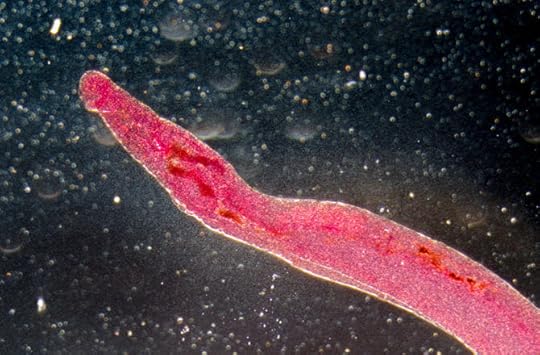
Some of the earliest evidence of a human parasite infection has been unearthed in an ancient burial site in Syria.
Why Did We Stop Building Pyramids? Fascinating? Check. Wonders of the world? Check. Stop building them? Whaaaat? DCI The egg of a parasite that still infects people today was found in the burial plot of a child who lived 6,200 years ago in an ancient farming community.
"We found the earliest evidence for a parasite [that causes] Schistosomiasis in humans," said study co-author Dr. Piers Mitchell, a biological anthropologist at the University of Cambridge in England. The oldest Schistosoma egg found previously, in Egyptian mummies, was dated to 5,200 years ago.
The parasite egg hails from the Fertile Crescent, a region around the Tigris and Euphrates Rivers in the Middle East, where some of the first irrigation techniques were invented about 7,500 years ago.That suggests that advances in farming technologies caused the rise of human infections with the water-borne worm, Mitchell told Live Science. (7 Stunning Archaeological Sites in Syria)
Schistosoma parasites live in freshwater snails and burrow into human skin when people wade into warm, fresh water. In the Middle East, the parasite typically infects the blood vessels in the kidneys and can lead to blood in the urine, anemia and eventually bladder cancer, while in Africa, the flatworm typically infects the bowels, where it causes bleeding and anemia as well. The parasite can spread when eggs are shed in the feces or urine of infected people.
Agricultural technologies are tied to the parasite's prevalence, experts say.
"Studies in Africa in modern times have shown that farming, irrigation and dams are by far the most common reasons why people get Schistosomiasis," Mitchell told Live Science.
Remains of Ancient Egyptian Epidemic Uncovered
The egg was uncovered in a cemetery with 26 skeletons at a site called Tell Zeidan in Syria. The site was occupied by people from about 7,800 to 5,800 years ago, and may have housed a few thousand people, said study co-author Gil Stein, the director of excavations at the site and an archaeologist at the Oriental Institute of the University of Chicago.
The team collected samples of soil from around the skeletons' abdomens, where the parasite would be expected to be found, and also from around the feet and heads, which served as a control (eggs found there would suggest the soil at the site was contaminated with the parasite more recently). The researchers sifted through the soil, looking for particles that were the right size to be the parasite's egg — just 0.003 inches (0.1 millimeter) in diameter, Mitchell said. They then mixed those particles with water and placed them under a microscope
http://news.discovery.com/history/archaeology/ancient-parasite-uncovered-in-mesopotamian-tomb-140620.htm

Some of the earliest evidence of a human parasite infection has been unearthed in an ancient burial site in Syria.
Why Did We Stop Building Pyramids? Fascinating? Check. Wonders of the world? Check. Stop building them? Whaaaat? DCI The egg of a parasite that still infects people today was found in the burial plot of a child who lived 6,200 years ago in an ancient farming community.
"We found the earliest evidence for a parasite [that causes] Schistosomiasis in humans," said study co-author Dr. Piers Mitchell, a biological anthropologist at the University of Cambridge in England. The oldest Schistosoma egg found previously, in Egyptian mummies, was dated to 5,200 years ago.
The parasite egg hails from the Fertile Crescent, a region around the Tigris and Euphrates Rivers in the Middle East, where some of the first irrigation techniques were invented about 7,500 years ago.That suggests that advances in farming technologies caused the rise of human infections with the water-borne worm, Mitchell told Live Science. (7 Stunning Archaeological Sites in Syria)
Schistosoma parasites live in freshwater snails and burrow into human skin when people wade into warm, fresh water. In the Middle East, the parasite typically infects the blood vessels in the kidneys and can lead to blood in the urine, anemia and eventually bladder cancer, while in Africa, the flatworm typically infects the bowels, where it causes bleeding and anemia as well. The parasite can spread when eggs are shed in the feces or urine of infected people.
Agricultural technologies are tied to the parasite's prevalence, experts say.
"Studies in Africa in modern times have shown that farming, irrigation and dams are by far the most common reasons why people get Schistosomiasis," Mitchell told Live Science.
Remains of Ancient Egyptian Epidemic Uncovered
The egg was uncovered in a cemetery with 26 skeletons at a site called Tell Zeidan in Syria. The site was occupied by people from about 7,800 to 5,800 years ago, and may have housed a few thousand people, said study co-author Gil Stein, the director of excavations at the site and an archaeologist at the Oriental Institute of the University of Chicago.
The team collected samples of soil from around the skeletons' abdomens, where the parasite would be expected to be found, and also from around the feet and heads, which served as a control (eggs found there would suggest the soil at the site was contaminated with the parasite more recently). The researchers sifted through the soil, looking for particles that were the right size to be the parasite's egg — just 0.003 inches (0.1 millimeter) in diameter, Mitchell said. They then mixed those particles with water and placed them under a microscope
http://news.discovery.com/history/archaeology/ancient-parasite-uncovered-in-mesopotamian-tomb-140620.htm

Published on June 21, 2014 16:48
The Ruth Chernock Series by Kim Scott on sale now
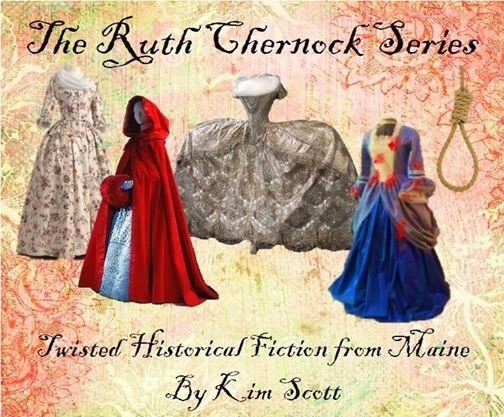 Oh, poor, troubled Ruth! At 15 she was an innocent young lady in love in 18th century Maine. Only 9 years later she was hanged for unspeakable crimes.
Oh, poor, troubled Ruth! At 15 she was an innocent young lady in love in 18th century Maine. Only 9 years later she was hanged for unspeakable crimes.'Regarding Ruth' begins the 4 book series that tells the story of Ruth then takes you thr...ough the decades with the generations that follow. This is a 5 Star Reviewed Series available on Kindle & Nook now for only $3.59 or all 4 books at only .99 each!
http://www.amazon.com/Ruth-Chernock-Kim-Scott-ebook/dp/B00AQJ7RII

Published on June 21, 2014 07:45
In the Midst: Maximizing Your Book’s Online Marketing with 5 Eas...
In the Midst: Maximizing Your Book’s Online Marketing with 5 Eas...: In indie publishing, the most crucial piece to your book’s online marketing plan is you. As the author, you need to be actively engaged i...

Maximizing Your Book’s Online Marketing with 5 Easy-to-Implement Tips
In indie publishing, the most crucial piece to your book’s online marketing plan is you. As the author, you need to be actively engaged in promoting your book. Here are 5 easy-to-implement online marketing tips that you can use to maximize your title’s presence and see sales start rolling in.
Maximize Your Social Network by Befriending Fellow AuthorsMeeting and becoming friends with your fellow authors will do wonders for you and your book. They are your peers in the business and may help you market and promote your book. Also, interacting with fellow authors can lead to other opportunities for you. They can lead you to new global markets, help you develop new story ideas, and lend a hand as you hone your craft. But most importantly, becoming friends with your fellow authors will give you a positive sense of community—priceless to any author.
Maximize Your Online PresenceAs much as possible, keep your book or author website updated and fresh. Post updates about your book, related activities, and your current writing projects. Casual visitors, readers, and fans of your book will enjoy browsing through your site.
Maximize Online Interest by BloggingBlogging is a must for any author. Start your own blog or guest blog with fellow authors. Join online groups and social networks to gain attention for you and your book. Post updates and new information about your book, book signings and related activities. Interaction with readers and fellow authors will definitely keep the interest high.
Maximize Your E-mail SignatureYour e-mail signature can be one of your best marketing tactics. Every e-mail you send is a prime opportunity to market your book. Add your byline (or pen name), e-mail address, website address, latest novels, and where interested readers may get copies online.
Maximize Your e-Press ReleaseThe electronic press release is one of your most powerful marketing weapons. For anything related that happens to your book or marketing activities send a press release. Planning library or bookstore signing? Send a press release. Opening a literary evening activity with a chapter reading? Send another press release. If you need a little help with your press release publicity campaign or designing your own blog and author website then iUniverse can make it happen. Contact your Marketing Consultant today on 1-800-AUTHORS.
Information contributed by: http://www.iuniverse.com/Community/AuthorTips/OnlineMarketingTips.aspx

Maximizing Your Book’s Online Marketing with 5 Easy-to-Implement Tips
In indie publishing, the most crucial piece to your book’s online marketing plan is you. As the author, you need to be actively engaged in promoting your book. Here are 5 easy-to-implement online marketing tips that you can use to maximize your title’s presence and see sales start rolling in.
Maximize Your Social Network by Befriending Fellow AuthorsMeeting and becoming friends with your fellow authors will do wonders for you and your book. They are your peers in the business and may help you market and promote your book. Also, interacting with fellow authors can lead to other opportunities for you. They can lead you to new global markets, help you develop new story ideas, and lend a hand as you hone your craft. But most importantly, becoming friends with your fellow authors will give you a positive sense of community—priceless to any author.
Maximize Your Online PresenceAs much as possible, keep your book or author website updated and fresh. Post updates about your book, related activities, and your current writing projects. Casual visitors, readers, and fans of your book will enjoy browsing through your site.
Maximize Online Interest by BloggingBlogging is a must for any author. Start your own blog or guest blog with fellow authors. Join online groups and social networks to gain attention for you and your book. Post updates and new information about your book, book signings and related activities. Interaction with readers and fellow authors will definitely keep the interest high.
Maximize Your E-mail SignatureYour e-mail signature can be one of your best marketing tactics. Every e-mail you send is a prime opportunity to market your book. Add your byline (or pen name), e-mail address, website address, latest novels, and where interested readers may get copies online.
Maximize Your e-Press ReleaseThe electronic press release is one of your most powerful marketing weapons. For anything related that happens to your book or marketing activities send a press release. Planning library or bookstore signing? Send a press release. Opening a literary evening activity with a chapter reading? Send another press release. If you need a little help with your press release publicity campaign or designing your own blog and author website then iUniverse can make it happen. Contact your Marketing Consultant today on 1-800-AUTHORS.
Information contributed by: http://www.iuniverse.com/Community/AuthorTips/OnlineMarketingTips.aspx

Published on June 21, 2014 07:25
Summer Solstice 2014 - 21 June
The June solstice in the year 2014 in the Norther Hemisphere is on Saturday, 21st of Juni 2014

The summer solstice occurs when the tilt of a planet’s semi-axis, in either the northern or the southern hemisphere, is most inclined toward the star (sun) that it orbits. Earth’s maximum axial tilt toward the sun is 23° 26′. This happens twice each year, at which times the sun reaches its highest position in the sky as seen from the north or the south pole. The summer solstice occurs during a hemisphere’s summer.
This is northern solstice in the northern hemisphere and the southern solstice in the southern hemisphere. Depending on the shift of the calendar, the summer solstice occurs some time between December 20 and December 23 each year in the southern hemisphere[2] and between June 20 and June 22 in the northern hemisphere. Though the summer solstice is an instant in time, the term is also colloquially used like midsummer to refer to the day on which it occurs. The summer solstice occurs on the day that has the longest period of daylight – except in the polar regions, where daylight is continuous, from a few days to six months around the summer solstice. Worldwide, interpretation of the event has varied among cultures, but most recognize the event in some way with holidays, festivals, and rituals around that time with themes of religion or fertility. Solstice is derived from the Latin words sol (sun) and sistere (to stand still).
Source: Wikipedia
http://www.holiday-times.com/summer-solstice-2014/

The summer solstice occurs when the tilt of a planet’s semi-axis, in either the northern or the southern hemisphere, is most inclined toward the star (sun) that it orbits. Earth’s maximum axial tilt toward the sun is 23° 26′. This happens twice each year, at which times the sun reaches its highest position in the sky as seen from the north or the south pole. The summer solstice occurs during a hemisphere’s summer.
This is northern solstice in the northern hemisphere and the southern solstice in the southern hemisphere. Depending on the shift of the calendar, the summer solstice occurs some time between December 20 and December 23 each year in the southern hemisphere[2] and between June 20 and June 22 in the northern hemisphere. Though the summer solstice is an instant in time, the term is also colloquially used like midsummer to refer to the day on which it occurs. The summer solstice occurs on the day that has the longest period of daylight – except in the polar regions, where daylight is continuous, from a few days to six months around the summer solstice. Worldwide, interpretation of the event has varied among cultures, but most recognize the event in some way with holidays, festivals, and rituals around that time with themes of religion or fertility. Solstice is derived from the Latin words sol (sun) and sistere (to stand still).
Source: Wikipedia
http://www.holiday-times.com/summer-solstice-2014/

Published on June 21, 2014 05:50
History Trivia - Robert the Bruce, defeats Edward II's army at Bannockburn
June 21

217 BC Carthaginian forces led by Hannibal destroyed a Roman army under Consul Gaius Flaminicy in a battle at Lake Trasimenus in central Italy.

524 Godomar, King of the Burgundians defeated the Franks at the Battle of Vézeronce.
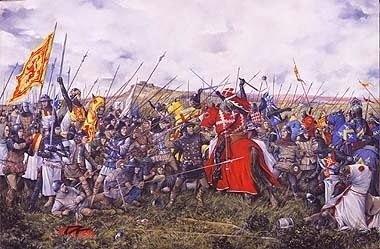
1314 The Scots, under Robert the Bruce, defeated Edward II's army at Bannockburn.

1327 King Edward III of England died.
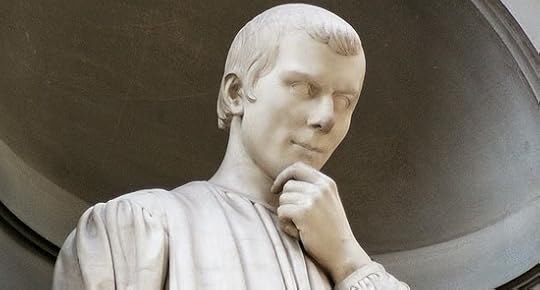
1527 Niccolo Machiavelli, author of "The Prince," died.
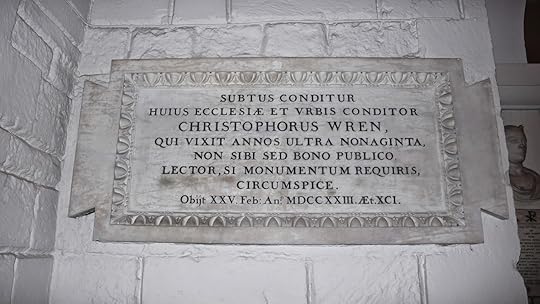
1675 Christopher Wren started the rebuilding St. Paul's Cathedral in London after the Great Fire.


217 BC Carthaginian forces led by Hannibal destroyed a Roman army under Consul Gaius Flaminicy in a battle at Lake Trasimenus in central Italy.

524 Godomar, King of the Burgundians defeated the Franks at the Battle of Vézeronce.

1314 The Scots, under Robert the Bruce, defeated Edward II's army at Bannockburn.

1327 King Edward III of England died.

1527 Niccolo Machiavelli, author of "The Prince," died.

1675 Christopher Wren started the rebuilding St. Paul's Cathedral in London after the Great Fire.

Published on June 21, 2014 05:49
June 20, 2014
Bronze Age Bling: Black Stone, Amber and Shells
by Rossella Lorenzi
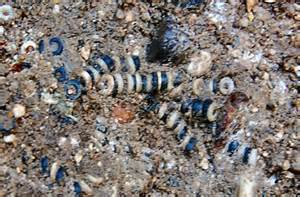 The necklace as it was found in the young woman's burial during the excavation founded by Persimmon Homes Ltd (Anglia).
The necklace as it was found in the young woman's burial during the excavation founded by Persimmon Homes Ltd (Anglia).
Suffolk County Council Archaeological Service Contracting Team
A 4,200-year-old necklace made of alternating black and white disc-shaped beads has helped British researchers devise a new, minimally micro-destructive approach for the identification of shell species in archaeological artifacts.
Mollusc shells appear to have been among the first durable materials used for personal ornaments and building tools, but their often degraded condition makes it hard to identify the shell species taxa with traditional morphological analysis.
Beatrice Demarchi, of York University’s department of Archaeology, Julie Wilson, of York University’s departments of Chemistry and Mathematics, and colleagues used statistical pattern recognition methods and amino acid racemisation analysis (a technique previously adopted used for dating rocks and fossil molluscs) to distinguish shells taxonomically.
Gold-Adorned Skeleton Could Be First Windsor Queen
“Shells preserve organic molecules trapped within the mineral skeleton, particularly proteins that are responsible for the process of biomineralisation,” they wrote in the journal PLOS ONE.
The new approach was tested on a necklace which has intrigued archaeologists ever since its discovery in 2009.
Found at an early Bronze Age site in Great Cornard, near Suffolk in eastern England, the necklace was unearthed by a team of archaeologists of Suffolk County Council Archaeology Service in the grave of a young adult woman. Her bones were radiocarbon-dated to around 2200 B.C.
“The necklace had not been worn on the body, but was found near the head. On the other side of the head was a Beaker pot which had probably contained drink for the journey into the afterlife,” Alison Sheridan, principal curator of Early Prehistory at National Museums in Scotland, told Discovery News.
The necklace consisted of strings of tiny disc beads of shells and black Whitby jet (a semi-precious stone which, when polished, takes on a waxy luster of the deepest opaque black), possibly carved out of the fossils of monkey puzzle trees at Whitby some 160 miles north.
“Beads of jet and shell alternated in a zebra design. Interspersed with these — and I am currently trying to work out exactly how the arrangement worked — were a number of amber beads, some perforated straight through, some with cross-shaped perforations,” Sheridan said.
Ancient Egyptians Crafted Jewelry From Meteorites
She noted that both the amber and the jet would have been accorded magical properties and used as amulets, to ward off evil and protect the woman.
“The necklace design is unique, although a lot of Early Bronze Age jet jewellery, and some amber jewellery, is known,” Sheridan said.
“However, the use of sea shells for jewellery during the Early Bronze Age in Britain is incredibly rare,” she added.
http://news.discovery.com/history/archaeology/bronze-age-bling-black-ston-amber-and-shells-140619.htm
 The necklace as it was found in the young woman's burial during the excavation founded by Persimmon Homes Ltd (Anglia).
The necklace as it was found in the young woman's burial during the excavation founded by Persimmon Homes Ltd (Anglia).Suffolk County Council Archaeological Service Contracting Team
A 4,200-year-old necklace made of alternating black and white disc-shaped beads has helped British researchers devise a new, minimally micro-destructive approach for the identification of shell species in archaeological artifacts.
Mollusc shells appear to have been among the first durable materials used for personal ornaments and building tools, but their often degraded condition makes it hard to identify the shell species taxa with traditional morphological analysis.
Beatrice Demarchi, of York University’s department of Archaeology, Julie Wilson, of York University’s departments of Chemistry and Mathematics, and colleagues used statistical pattern recognition methods and amino acid racemisation analysis (a technique previously adopted used for dating rocks and fossil molluscs) to distinguish shells taxonomically.
Gold-Adorned Skeleton Could Be First Windsor Queen
“Shells preserve organic molecules trapped within the mineral skeleton, particularly proteins that are responsible for the process of biomineralisation,” they wrote in the journal PLOS ONE.
The new approach was tested on a necklace which has intrigued archaeologists ever since its discovery in 2009.
Found at an early Bronze Age site in Great Cornard, near Suffolk in eastern England, the necklace was unearthed by a team of archaeologists of Suffolk County Council Archaeology Service in the grave of a young adult woman. Her bones were radiocarbon-dated to around 2200 B.C.
“The necklace had not been worn on the body, but was found near the head. On the other side of the head was a Beaker pot which had probably contained drink for the journey into the afterlife,” Alison Sheridan, principal curator of Early Prehistory at National Museums in Scotland, told Discovery News.
The necklace consisted of strings of tiny disc beads of shells and black Whitby jet (a semi-precious stone which, when polished, takes on a waxy luster of the deepest opaque black), possibly carved out of the fossils of monkey puzzle trees at Whitby some 160 miles north.
“Beads of jet and shell alternated in a zebra design. Interspersed with these — and I am currently trying to work out exactly how the arrangement worked — were a number of amber beads, some perforated straight through, some with cross-shaped perforations,” Sheridan said.
Ancient Egyptians Crafted Jewelry From Meteorites
She noted that both the amber and the jet would have been accorded magical properties and used as amulets, to ward off evil and protect the woman.
“The necklace design is unique, although a lot of Early Bronze Age jet jewellery, and some amber jewellery, is known,” Sheridan said.
“However, the use of sea shells for jewellery during the Early Bronze Age in Britain is incredibly rare,” she added.
http://news.discovery.com/history/archaeology/bronze-age-bling-black-ston-amber-and-shells-140619.htm

Published on June 20, 2014 10:55



